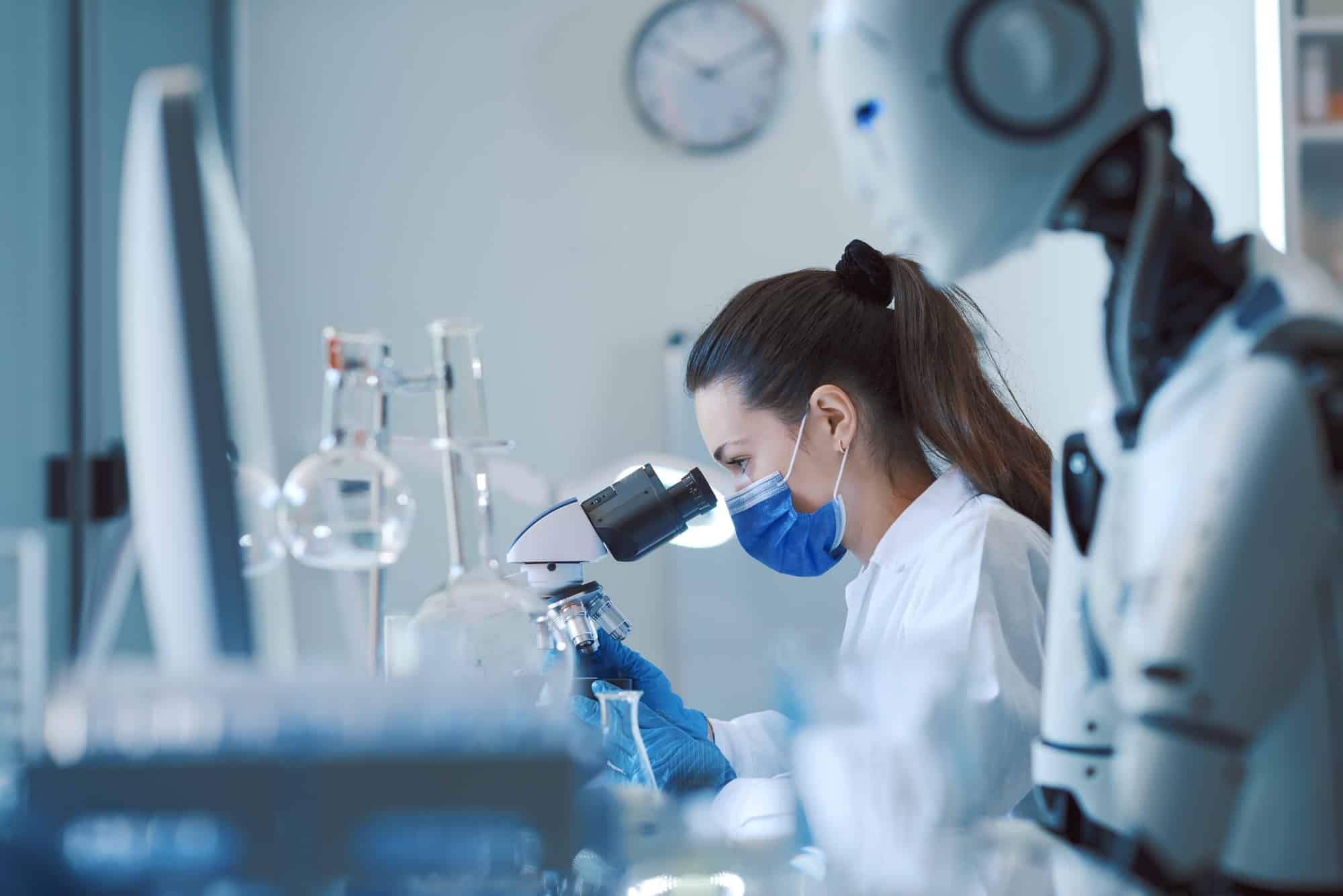In the evolving landscape of medical technology, artificial intelligence (AI) increasingly takes center stage. It has a particularly compelling role in diagnosing rare genetic disorders. These disorders often fly under the radar, misdiagnosed, or diagnosed too late due to their low occurrence rates and symptoms overlapping with common diseases. In this article, we explore how AI is revolutionizing the diagnosis and management of rare diseases, making a significant impact on patient care and health outcomes.
Harnessing AI to Identify Patterns in Rare Diseases
The first step in diagnosing any disease, rare or otherwise, is recognizing the patterns of its manifestation. This is where AI shines due to its ability to sift through huge volumes of data to detect patterns and make predictions.
In parallel : How Does Smart Irrigation Technology Utilize Weather Data for Water Conservation in Agriculture?
Traditional methods of diagnosis rely heavily on doctors’ skill and experience, which, while not ineffective, are certainly fallible. The knowledge base of even the most experienced doctor is limited, and there is always the possibility of human error. This is particularly true in the case of rare diseases, where a physician might see only one or two cases in their entire career.
In contrast, AI-based systems can learn from vast repositories of medical data, including clinical records, genetic databases, and scholarly articles from resources like PubMed and Crossref. These systems use machine learning algorithms to identify patterns and correlations that would be difficult, if not impossible, for a human to detect. As such, AI can often make more accurate predictions and diagnoses earlier than traditional methods.
In the same genre : How Is Deep Learning Aiding in the Discovery of New Materials for Electronics?
The Power of Data in Medical Diagnostics
Data plays a crucial role in modern medical diagnostics. AI’s capacity to process, analyze, and interpret massive amounts of data is one of its strongest advantages in clinical applications.
In the realm of rare diseases, this is particularly invaluable. Genetic data, for instance, is hugely complex and dense. It takes considerable time and specialized knowledge to interpret and make meaningful conclusions. Yet, AI can rapidly and accurately process genetic data, identifying the minute variations and anomalies associated with specific diseases.
Patients’ electronic health records (EHRs) are another rich source of data. These records contain a treasure trove of information: medical history, symptoms, treatments, and responses to those treatments. AI systems can analyze this data, learning from past cases to predict and diagnose future ones. In this way, AI helps ensure that every patient benefits from the collective knowledge and experience of the entire medical community.
AI’s ability to work with data extends beyond analysis to include sourcing and collecting data. Google Scholar, PubMed, and other academic resources are replete with articles and studies on rare diseases. AI can search these resources more quickly and comprehensively than a human, gathering and synthesizing the latest research for use in diagnostics.
Leveraging AI for Personalized Patient Care
The use of AI in diagnosing rare diseases extends beyond mere identification. It also has the potential to significantly improve patient care by facilitating a more personalized approach.
Rare diseases are often complex and multifaceted, with patients exhibiting different symptoms and responses to treatment. AI can consider all these variables, along with the patient’s genetic information and medical history, to make personalized treatment recommendations.
Furthermore, AI can continuously monitor the patient’s condition, adjusting treatment recommendations based on the patient’s progress and response. This continuous feedback loop ensures that the patient receives the most effective care at all times.
Moreover, AI can predict how a patient’s disease is likely to progress based on data from similar patients. This can help doctors prepare a long-term care plan and make decisions about treatment options.
AI and the Future of Rare Disease Diagnosis
AI’s role in diagnosing rare genetic disorders is transformative. It is making the diagnosis of rare diseases faster, more accurate, and more personalized. But the future promises even more.
With AI’s predictive abilities, we may be able to catch diseases before they manifest, possibly even in utero. This could significantly improve outcomes for patients, allowing for early interventions and management strategies.
Finally, the rise of AI opens up exciting possibilities for research. It can help identify patterns and correlations in disease data that we may not have known existed, offering new avenues for understanding and treating rare diseases.
In conclusion, AI’s role in diagnosing rare genetic diseases is increasingly significant. It offers the potential to improve diagnosis speed and accuracy, personalize patient care, and advance our understanding of these diseases. With ongoing advancements in AI and machine learning, the future for patients with rare genetic disorders is looking brighter.
Deep Learning in Variant Calling for Rare Genetic Diseases
Deep learning, a subset of machine learning, is particularly influential in the realm of rare disease diagnosis. By utilizing neural networks, deep learning can mimic the human brain’s process of learning from experience. This is crucial in the identification or variant calling of the genetic mutations that cause many rare diseases.
Variant calling is a complex process where genomics data is analyzed to identify variations in the genome sequence. These variations, such as single nucleotide polymorphisms (SNPs) or insertions and deletions (indels), often harbor the cause of many genetic diseases.
Deep learning can significantly improve the accuracy and efficiency of variant calling. Neural networks can learn from large datasets of genomic sequences, identifying patterns and correlations that can signify a disease-causing variant. More importantly, these networks can continually improve their performance with exposure to more data, leading to ever-increasing precision in variant calling.
Deep learning can also help overcome the challenge of detecting rare genetic variations. Given the rarity of these diseases, there might not be sufficient data for traditional machine learning algorithms. However, deep learning models can learn from small datasets and, in some cases, can even generate synthetic data to supplement the real data.
In essence, the use of deep learning in variant calling can lead to a more accurate and efficient diagnosis of rare genetic diseases, benefitting both patients and healthcare providers.
AI and Clinical Trials for Rare Diseases
Artificial intelligence is also playing a significant role in clinical trials for rare diseases. These trials are critical for developing and evaluating new treatments. However, they also present unique challenges due to the small number of patients and the heterogeneity of the diseases.
AI can help overcome these challenges in several ways. Firstly, it can help identify suitable patients for clinical trials through a comprehensive analysis of electronic health records and genetic databases. This can speed up the recruitment process and ensure that the trial includes patients with a diverse range of symptoms and disease progressions.
AI can also aid in the design of clinical trials. By analyzing data from previous trials and real-world evidence, it can help identify the most effective trial designs and endpoints. This can increase the likelihood of the trial’s success and accelerate the development of new treatments.
Furthermore, AI can support the monitoring and analysis of clinical trials. Through continuous analysis of patient data, AI can detect changes in patients’ conditions more quickly than traditional monitoring methods. This can enable earlier interventions if a patient’s condition deteriorates and can help identify any potential side effects of the treatment.
Finally, AI can assist in synthesizing and interpreting the results of clinical trials. By analyzing data from multiple trials, AI can help identify patterns and correlations that might be missed by traditional analysis. This can contribute to a deeper understanding of the disease and its treatment, ultimately benefitting patients with rare genetic disorders.
Conclusion
Artificial intelligence, particularly deep learning and machine learning, is revolutionizing the diagnosis and treatment of rare genetic disorders. By harnessing the power of data from sources such as Google Scholar, PubMed, and electronic health records, AI can improve the speed and accuracy of diagnosis, contribute to personalized patient care, and support the development and evaluation of new treatments through clinical trials.
Looking ahead, the continued advancements in AI promise even greater improvements. With AI’s predictive capabilities, we may see a day where diseases are caught before they manifest, allowing for earlier interventions. Additionally, AI’s ability to learn from vast amounts of data and identify patterns can open up new avenues for understanding and treating rare diseases.
In conclusion, the role of AI in diagnosing and treating rare genetic disorders is not just significant, but transformative. It is ushering in a brighter future for patients with these diseases and the medical community as a whole.






